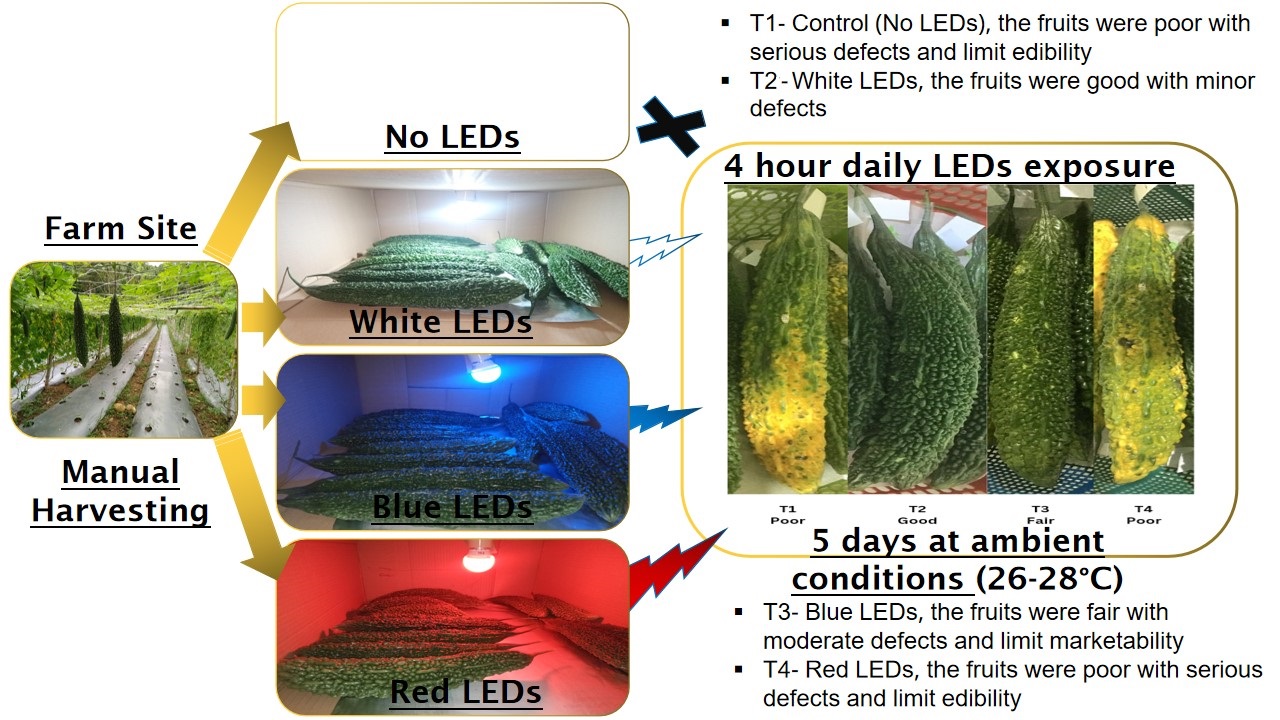Pigment composition and physico-chemical characteristics of Bittergourd (Momordica charantia L. cv. Jadeite) during postharvest period as influenced by illumination colors

Published 2024-07-01
Keywords
- Bittergourd,
- LED,
- pigmental composition,
- postharvest quality
How to Cite
Copyright (c) 2024 John Ponteras, John Donald Quisil, Felix Salas

This work is licensed under a Creative Commons Attribution 4.0 International License.
Abstract
Fruits and vegetables that exhibit a higher chlorophyll content, as reflected in their visual appearance, are the preferred choice of consumers. The study aimed to evaluate the effects of Light Emitting Diodes (LEDs) on the physical, chemical, and pigmentation quality of bitter gourd using white, blue, and red at 1.5 W/135 lumens (Foshan Electrical and Lighting Co., Ltd [FSL], China). Bitter gourd, with a short postharvest life of 4-5 days due to physical and chemical disorders, was harvested weighing 300–400 g and 25 x 5 cm from the farm and subjected to varying illuminations within a 4-hour period for five days, with measurements taken daily. Statistical differences between treatments were observed in physicochemical parameters such as fruit shrivelling, yellowing, visual appearance, weight loss, dry matter content, total chlorophyll, pH values, and TA. The quality and shelf-life of bitter gourd fruits were found to be improved by the white LED. The visual appearance was maintained, and fruit shrivelling and yellowing were delayed, with lower weight loss observed. Slight changes in chlorophylls and carotenoids, vitamin C, and a shelf-life of 5 days were recorded.




